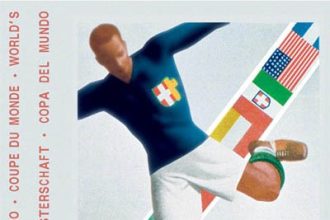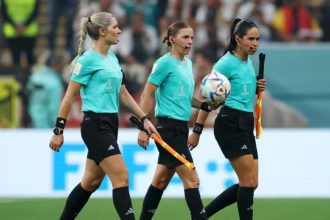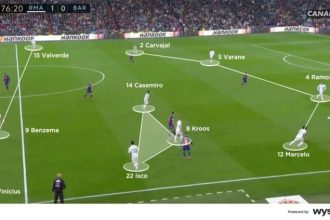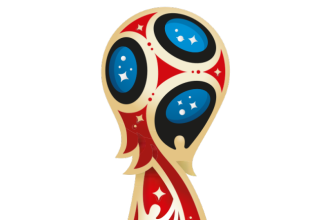A kick-off starts both halves of a match, both halves of extra time, and restarts play after a goal has been scored. Free kicks (direct or indirect), penalty kicks, throw-ins, goal kicks, and corner kicks are other restarts (see Laws 13 – 17). A dropped ball is the restart when the referee stops play and the Law does not require one of the above restarts. If an offence occurs when the ball is not in play this does not change how play is restarted.
1. Kick off
PROCEDURE
- the referee tosses a coin and the team that wins the toss decides which goal to attack in the first half or to take the kick-off
- depending on the above, their opponents take the kick-off or decide which goal to attack in the first half
- the team that decided which goal to attack in the first half takes the kick-off to start the second half
- for the second half, the teams change ends and attack the opposite goals
- after a team scores a goal, the kick-off is taken by their opponents
For every kick-off:
- all players, except the player taking the kickoff, must be in their own half of the field of play
- the opponents of the team taking the kick-off must be at least 9.15 m (10 yds) from the ball until it is in play
- the ball must be stationary on the center mark
- the referee gives a signal
- the ball is in play when it is kicked and clearly moves
- a goal may be scored directly against the opponents from the kick-off; if the ball directly enters the kicker’s goal, a corner kick is awarded to the opponents
OFFENCES AND SANCTIONSIf the player taking the kick-off touches the ball again before it has touched another player an indirect free kick, or for a handball offense, a direct free kick is awarded. In the event of any other infringement of the kick-off procedure, the kick-off is retaken.
2. Dropped ball
PROCEDURE
- The ball is dropped for the defending team goalkeeper in their penalty area if, when play was stopped: the ball was in the penalty area or the last touch of the ball was in the penalty area
- In all other cases, the referee drops the ball for one player of the team that last touched the ball at the position where it last touched a player, an outside agent, or, as outlined in Law 9.1, a match official
- All other players (of both teams) must remain at least 4 m (4.5 yds) from the ball until it is in play
The ball is in play when it touches the ground. OFFENCES AND SANCTIONS The ball is dropped again if it:
- touches a player before it touches the ground
- leaves the field of play after it touches the ground, without touching a player
If a dropped ball enters the goal without touching at least two players play is restarted with:
- a goal kick if it enters the opponent’s goal
- a corner kick if it enters the team’s goal
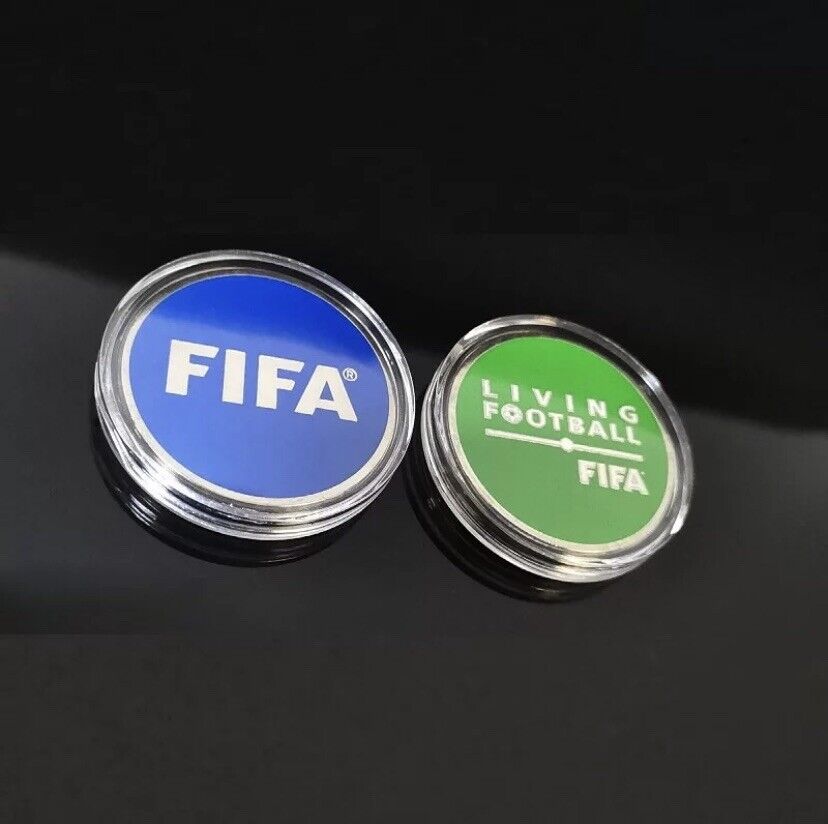
By: IFAB Laws of the Game 2023-24


